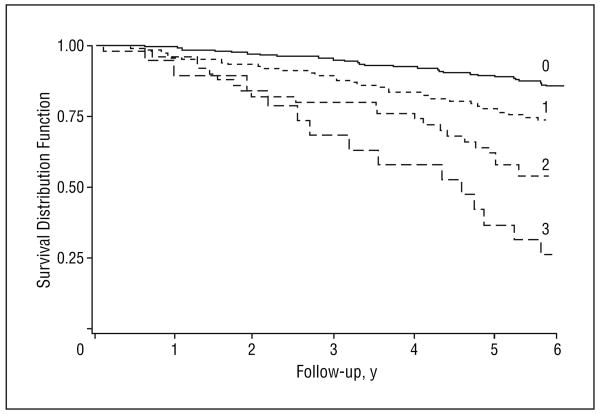Figure.
Relationship between the number of anabolic hormones in the lowest serum level quartile and 6-year survival in older men. The survival distribution function according to the number of dysregulated hormones is shown for the 6 years of follow-up. The solid black line indicates the survival rates for patients with 0 dysregulated hormones; short-dashed line, survival rates for patients with 1 dysregulated hormone; medium-dashed line, survival rates for patients with 2 dysregulated hormones; and long-dashed line, survival rates for patients with 3 dysregulated hormones. The thresholds for anabolic hormonal deficiency were 70 ng/dL (to convert to nanomoles per liter, multiply by 0.037) for bioavailable testosterone, 63.9 ng/mL (to convert to nanomoles per liter, multiply by 0.13) for total insulinlike growth factor 1, and 60 μg/dL (to convert to micromoles per liter, multiply by 0.027) for dehydroepiandrosterone sulfate (log rank=62.92; P<.001).

